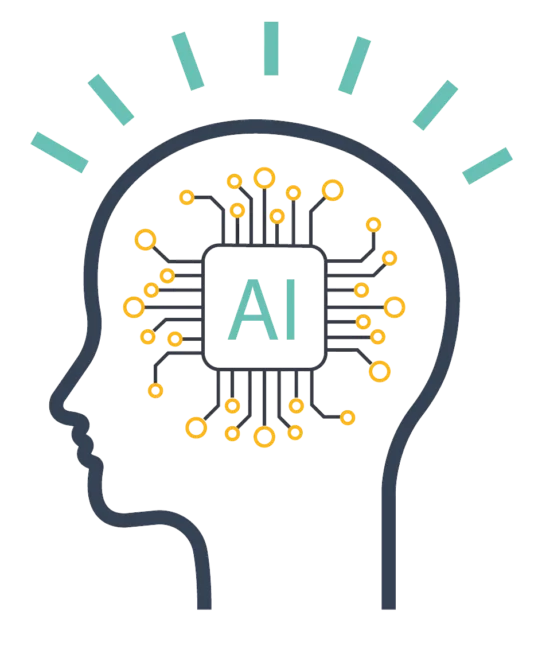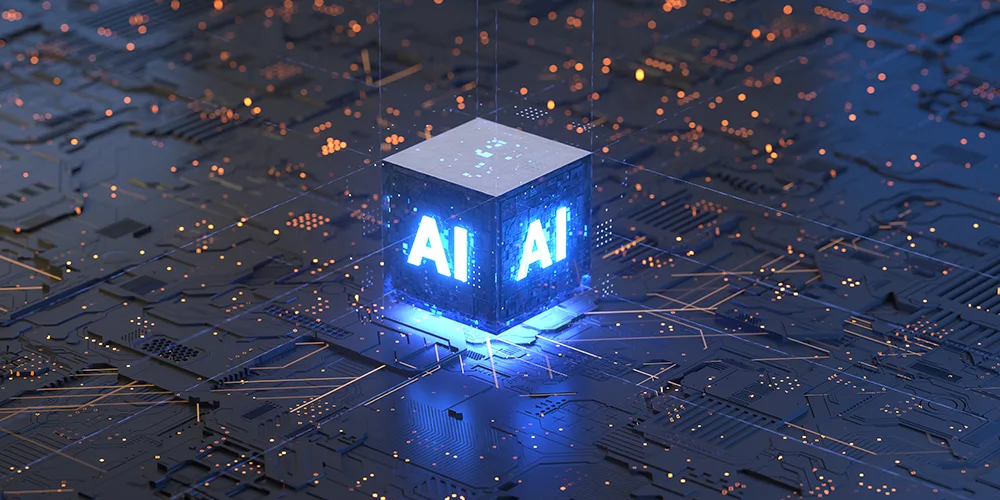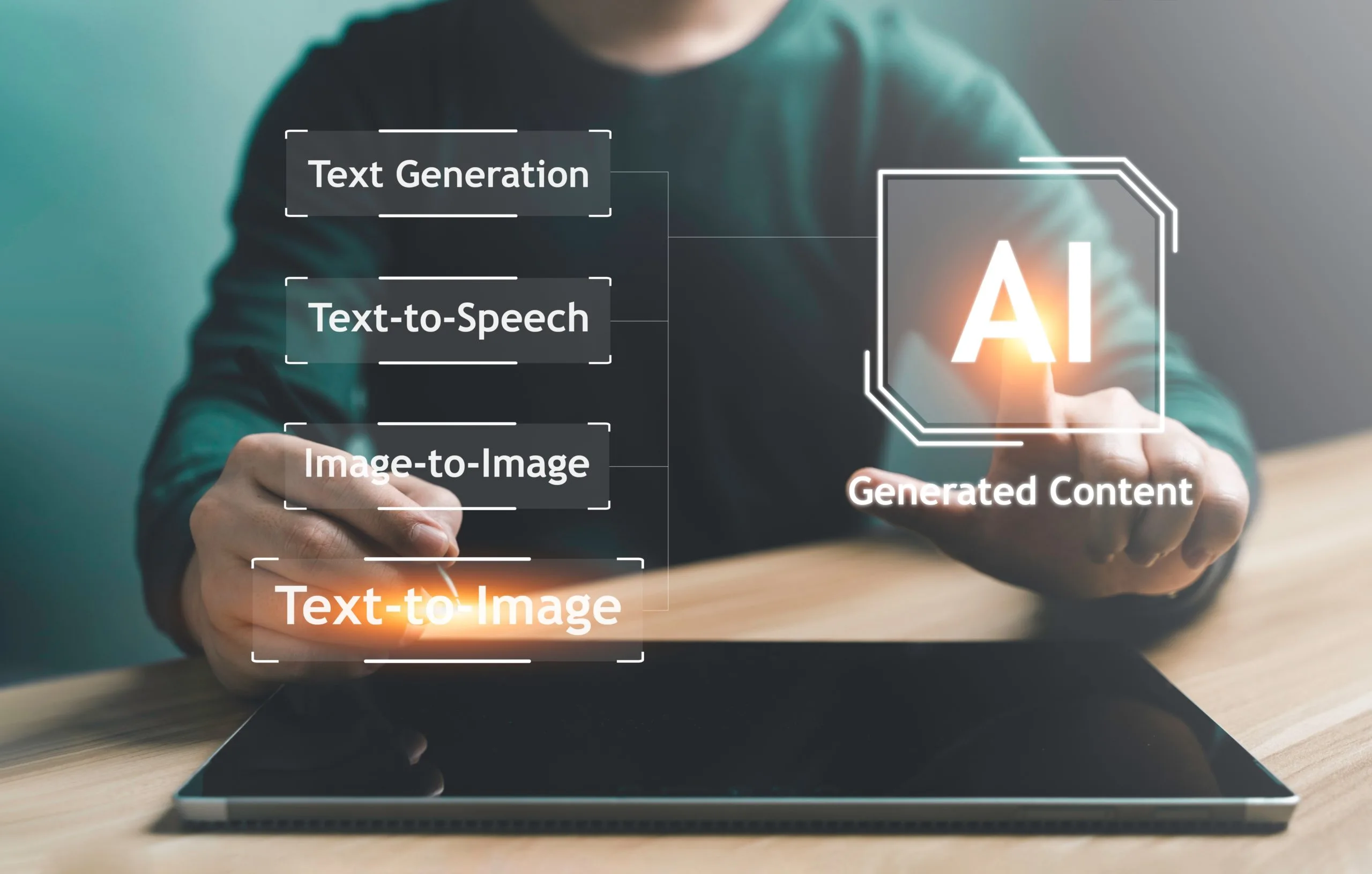How AI is quietly powering your personal and work life

Posted on April 8, 2025 by Louise Howland
Artificial Intelligence might sound futuristic, but the truth is, it’s already woven into your everyday routine (and has been for years). Whether you’re binge-watching your favourite series, navigating your commute, or writing up a report at work, AI is quietly working in the background to make things quicker, smoother and more personal. In fact, you’re probably using AI far more than you realise.
Let’s explore how AI is showing up in both your personal and professional life, and how some of the latest tools are changing the way we live and work.
How AI fits seamlessly into daily life
Imagine this: you wake up to music from your smart speaker, it gives you a traffic update, reads your calendar, and turns on the heating. That’s AI at work. Later, your phone uses facial recognition to unlock, your email offers to auto-complete your sentences, and your streaming apps seem to know exactly what show you’ll want next. It feels natural now, but it’s all powered by artificial intelligence.

Even less obvious things, like spam filters, autocorrect, or map apps that avoid traffic, are driven by machine learning algorithms designed to predict, suggest and optimise your experience.
And now, AI is becoming even more personal. Tools like Replika, an AI companion app, offer emotional support or conversation-style interaction. Apps like MyFitnessPal and Noom are using AI to give more tailored advice around health and fitness. Even AI-powered meal planners like Whisk suggest recipes based on what’s in your fridge.
AI at work: your new digital colleague
At work, AI has quickly moved from novelty to necessity. It’s not just tech giants benefiting, small and medium-sized businesses are using AI to do more with less, especially when it comes to admin, communication and cybersecurity.

At work, AI has quickly moved from novelty to necessity. It’s not just tech giants benefiting, small and medium-sized businesses are using AI to do more with less, especially when it comes to admin, communication and cybersecurity.
For example, Microsoft Copilot, integrated into tools like Word, Excel and Teams, is changing the way we write documents, analyse data, and even prepare meeting summaries. It acts like a smart assistant that learns from your organisation’s data, giving insights and speeding up tasks that used to take hours. Although it is important to say that its organisational learning is governed by access controls, data compliance frameworks, and Microsoft 365 security boundaries.
In customer service, AI chatbots are handling enquiries around the clock. Meanwhile, tools like Otter.ai automatically transcribe and summarise meetings, helping teams stay aligned without anyone frantically taking notes.
Even areas like IT security are getting an AI upgrade. Solutions like secure+, ramsac’s own cybersecurity monitoring service, uses AI powered behavioural analysis, anomaly detection, and pattern recognition to identify potential threats to flag suspicious activity before it becomes a real threat, giving IT teams more time to focus on strategy, not firefighting.
New AI apps that are reshaping life and work
The AI landscape is evolving quickly, and some of the newest tools are helping individuals and businesses think differently about how they operate.
Some standout examples include:
- ChatGPT & Claude – Conversational AI tools being used for writing social media captions, generating business reports, or assisting with coding tasks.
- Notion AI – Summarises documents, suggests ideas, or drafts entire blog posts within the popular productivity app.
- Runway ML – Allows creatives to generate videos, edit media, and automate post-production using AI.
- GrammarlyGO – Rewrites text, adjusts tone, and accelerates content creation.
- Tome – A new AI-powered presentation tool for building professional slide decks in minutes.
What these tools have in common is their ability to remove friction, to help people get to the results faster, with less manual effort and more time for creativity or critical thinking.
AI you didn’t even know you were using
One of the most surprising things about AI is how invisible it can be. If you’ve ever received a one-click reply to suggestion in Outlook or Gmail, that’s AI. If your phone alerts you when it’s time to leave for an appointment based on traffic, that’s AI too.
Even the recommended products on Amazon or suggested connections on LinkedIn are driven by complex AI algorithms working in the background. It’s not science fiction, it’s everyday tech.
Why this matters for SMEs
For business leaders, especially in sectors like finance, legal, and not-for-profit, the challenge is knowing how and where to embrace AI safely and effectively. With AI tools rapidly evolving, there are also growing concerns about data privacy, ethical usage, and the risks of unintentionally sharing sensitive information through AI platforms.
That’s where expert guidance becomes essential. At ramsac, we help organisations integrate tools like Microsoft Copilot, enhance security with AI-driven monitoring, and use platforms like SharePoint and Power BI more strategically. Our secure+ service ensures AI adoption is backed by strong cybersecurity measures, reducing the risk of threats from both internal misuse and external attacks.
Just as important as the technology itself is making sure your team understands how to use it. AI training helps staff recognise where and when to use AI, how to verify outputs, and how to avoid risks such as bias or data leakage. When people are confident and informed, AI becomes a powerful productivity tool rather than a liability.
We believe AI should support human work, not replace it. When used wisely and securely, it helps staff focus on higher-value tasks, improves accuracy, and enhances the overall customer experience.

AI isn’t the future, it’s already here
The bottom line? AI is no longer optional or far-off. Whether you’re managing your calendar, writing reports, or streaming music, you’re already using AI in ways that make life easier.
The next step is to start using it intentionally, at home, at work, and in your business strategy.
Ready to explore how AI can help your organisation work smarter?
Whether it’s productivity tools or smarter cybersecurity, ramsac can help you put AI to work where it matters most.







